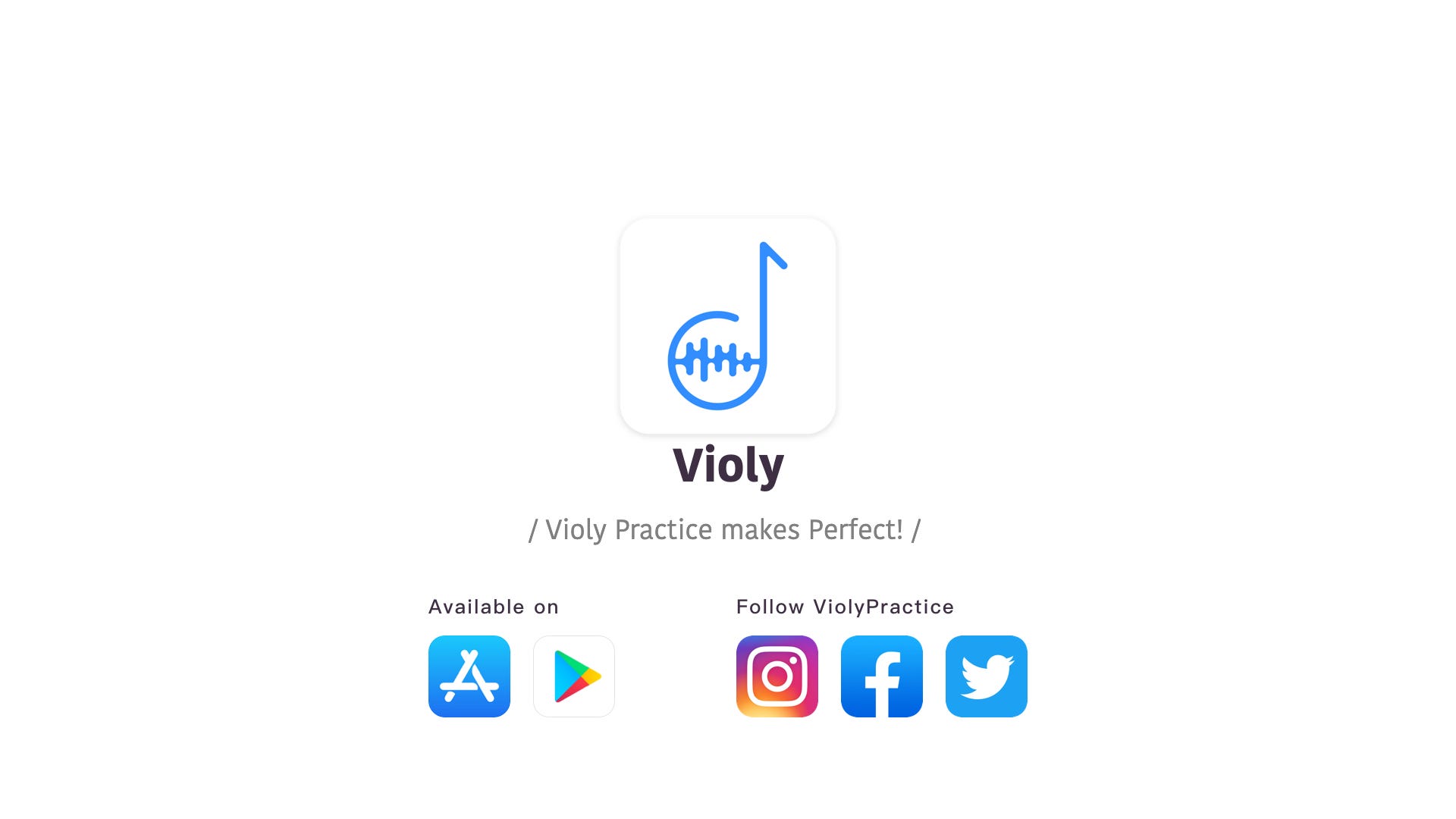Viola Bowing Techniques
In this session, Professor Wing Ho will talk about viola bowing techniques.
Content of Wing Ho’s lecture is as follows (edited in first person):
Détaché
Détaché can be played in all parts of the bow.
Since viola bows are heavier than violin bows, and viola strings are thicker than violin strings, the optimal position to play détaché with the viola bow is a little lower than the middle of the bow, which is different from the best position to play détaché with the violin bow. Finding the best position to play détaché helps us produce sound more easily and play more comfortably.
Legato
Legato means that we need to play multiple notes in one bow stroke. Let’s have a look at the sheet music of Walton’s Concerto for Viola and Orchestra.
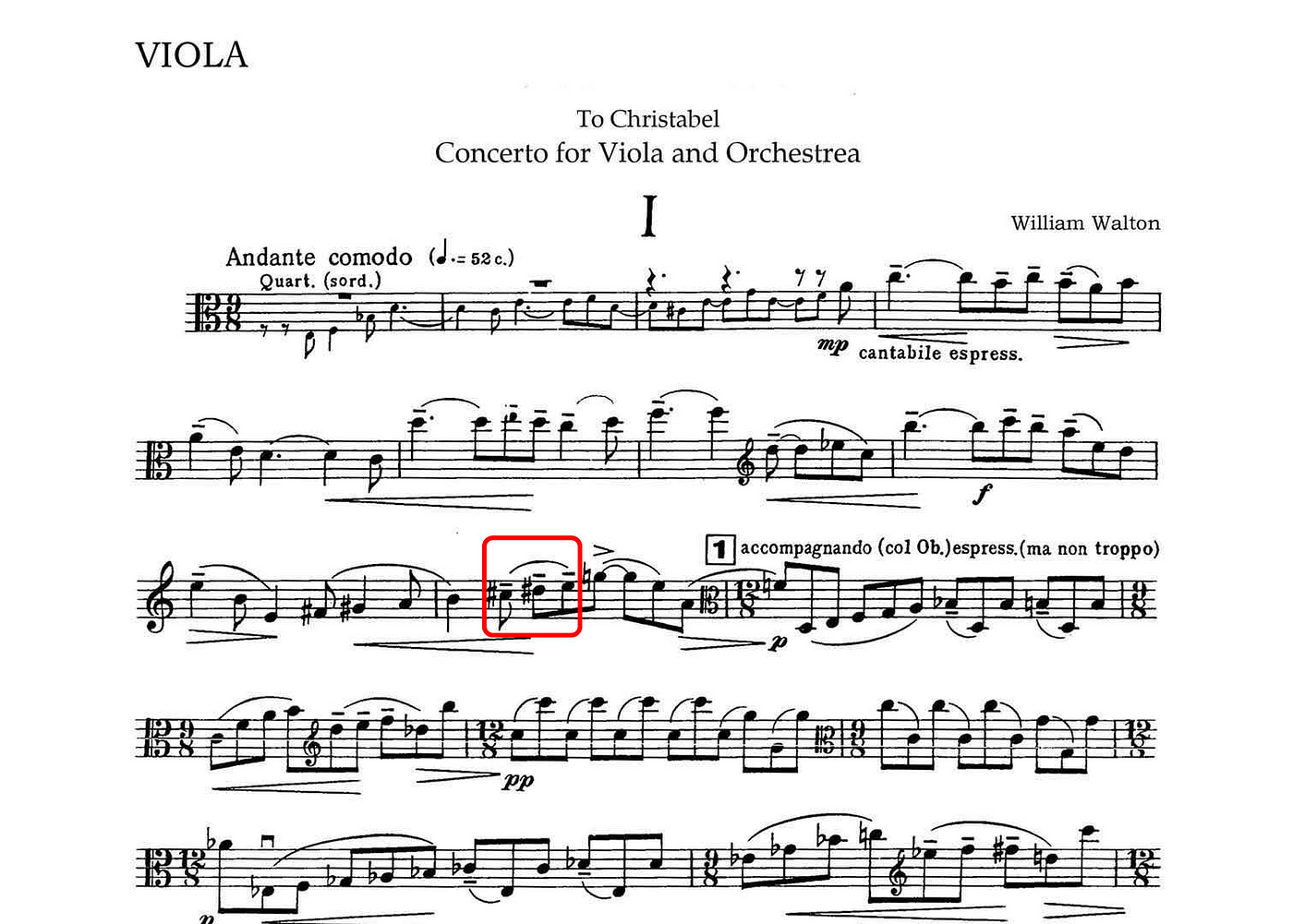
We can find that legato is played frequently in this piece. We use a tie to connect two notes of the same pitch so that the notes can be sustained. A slur is applied to two or more different notes and means that the different notes should be played legato.
There is another bowing technique called portato, in which successive notes are re-articulated while being joined under a single continuing bow stroke.
We can see that we need to play portato in the bar 10 in the sheet music above(marked in the picture). Apart from Walton’s viola concerto, Reger’s Suite №1 for Solo Viola is also a typical piece for practicing portato.
Collé
Kreutzer’s Etude №7 for Viola is suitable for practicing collé.
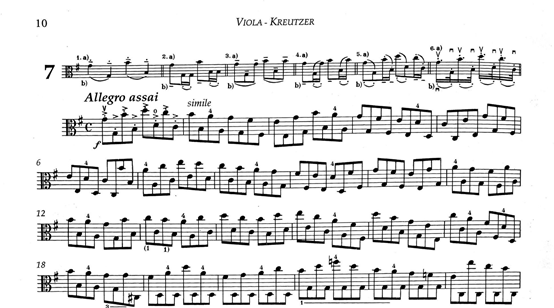
Explosiveness is needed for playing collé. This bowing technique is usually used when we are playing chords. But in general, it is not frequently used. It can help us increase the finger flexibility. When we are playing collé, we should move the fingers instead of the wrist.
Martelé
To practice martelé, we can select Kreutzer’s Etude №6 for Viola.

When we are playing martelé, we should notice that the notes are short and the bow should be kept on the string. We usually use the tip of the bow to play martelé, and the speed of playing can be controlled. We are supposed not to play it too fast. We need to take three steps to play martelé:
- Place the bow on the string;
- “Release” the bow after producing the sound;
- Control the bow and apply strength to it with our index finger on the right hand.
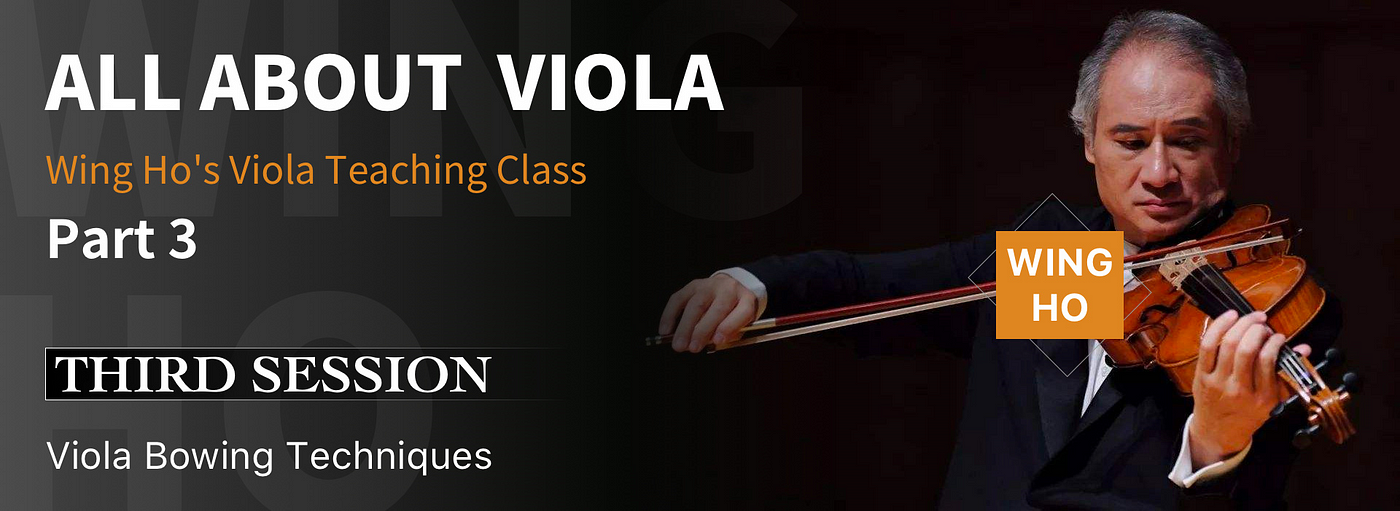
Staccato
When we are playing staccato, we should also control the speed of playing and the bow should be kept on the string. As I mentioned above, we tend to play martelé at the tip of the bow, because the tension of this part of the bow is higher. However, we usually use the lower half of the bow to play staccato, and the notes being played should be separated from one another.
Spiccato
Likewise, we use the lower half of the bow to play spiccato and the speed of playing is controllable. After producing the sound, the bow needs to leave the string.
Sautillé
We use the middle of the bow to play sautillé on violin, but when it comes to viola, the best position to play sautillé with the viola bow is a little lower than the middle of the bow. To practice sautillé, we can start from playing détaché, and the sound produced should be clear. Then we can gradually speed up so that the bow can bounce slightly off the string. The speed of playing sautillé cannot be controlled.
Ricochet
Ricochet is seldom used in viola playing. To play ricochet, we should let the bow fall on the string and bounce naturally to produce a series of rapid notes.
Let’s have a look at the sheet music below. We can see that there are dots beneath some notes. The dots mean that the notes should be separated from one another, which is to say, we can play spiccato or martelé. Also, we can use other bowing techniques to play the notes. It depends on the tempo.
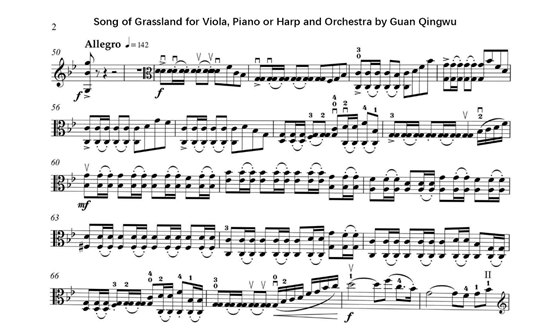
Chords
Chords are frequently used in viola playing. A chord refers to a set of pitches consisting of three or more notes that are heard as if sounding simultaneously. Here I would like to tell you more about it.
In 1978, I went to Hong Kong with my family and lived in the city for some time. When I was in Hong Kong, I learned the violin for one year with Mr. Zheng Yanyi, who was a professor of violin in Shanghai Conservatory of Music. During the year, I focused on playing open strings and chords. The year’s training was very effective and it laid the foundation for my viola learning.
In my opinion, the best way to play chords is playing two notes at a time.
But it depends on the certain piece we play. We use different ways to play chords in different works. For example, when we are playing Sarabande from Bach’s Cello Suite №1, we tend to play broken chords, because there are many appoggiaturas. Broken chords are also frequently played in Sarabande from Bach’s Cello Suite №3.
No matter how we play the chords, we should produce resonant sound. In addition, when it comes to Bach’s works, we need to figure out which way to use when playing chords.
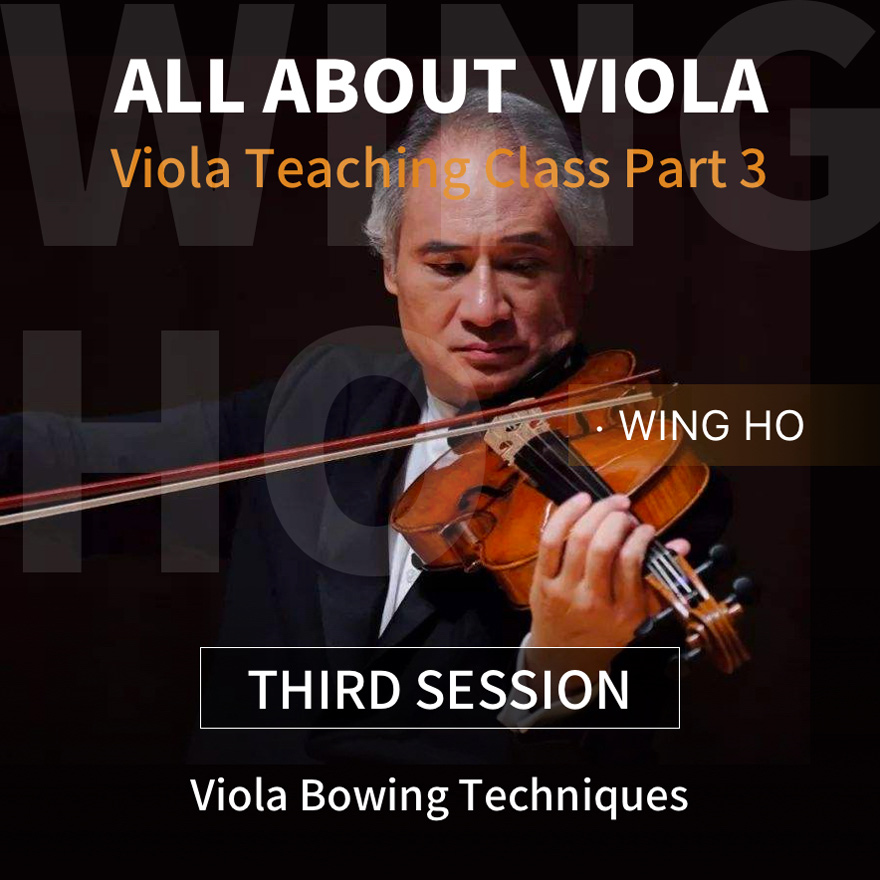
Chords are often heard at the beginning of viola concertos. Let’s have a look at the sheet music below:
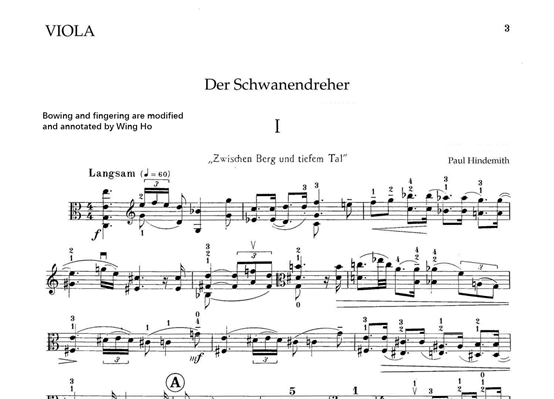
I counted beats before starting to play Hindemith’s Der Schwanendreher. Personally, I tend to count beats before starting to play. Different players may have different habits. It also depends on the pieces.
Now let’s take a look at the sheet music of Bach’s Concerto for Viola and Orchestra in c minor. To make the melody complete, we can start right away instead of counting beats.

Likewise, we tend to start right away when playing Joseph Schubert’s Concerto for Viola and Orchestra in C major so that the playing can be more rhythmic.
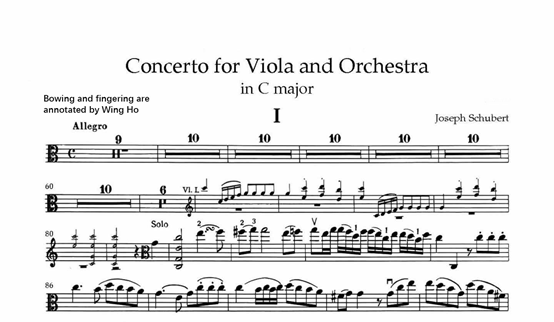
As I mentioned above, the best way to play chords is playing two notes at a time. Let’s take Walton’s Viola Concerto for an example.
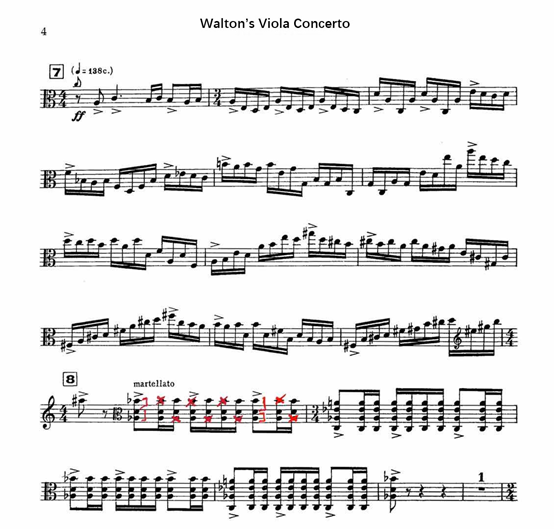
To play all notes consisting of chords at the same time may be difficult. Therefore, we can play two notes at a time. I made some marks on the sheet music, which mean that we need to play two notes simultaneously. We can play slowly at the beginning, and gradually speed up. It is hard to play on three or four strings at the same time, so we can play on two strings first.
Here’s another example. The phrases below belong to the sheet music of Hindemith’s Der Schwanendreher.
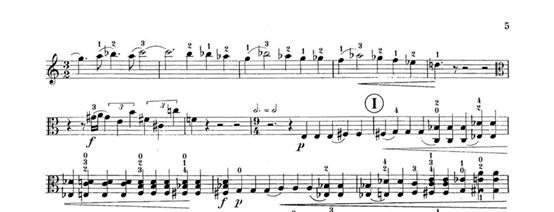
When we are playing the chords consisting of three notes, we can play two notes at a time so that there will be more resonance and explosiveness.
To sum up, the bowing techniques I introduced above are the most commonly used in viola playing. They should be flexibly used when we are playing different pieces.
Music Q & A
Audience: When I am holding the bow, my fingers tend to move up. What should I do to avoid the problem?
Wing Ho: It seems that you do not form a good habit of holding the bow. Maybe you can use some tools to help you. If our fingers move up when holding the bow, we cannot hold it stably because the point of support is lost. Then we are not able to play fast. Actually, in ancient times, players’ bow grip tended to be higher. Ancient music tended to be gentle and slow as well. At present, we are supposed to hold the bow correctly. As I mentioned in the former session, the first knuckles of our fingers should be placed on the stick.
Audience: How to play the chords in Bartók’s Viola Concerto(bar 135)?
Wing Ho: In fact, the recommended way of playing chords I mentioned above is commonly used in the playing of different works. You may try it out when playing this concerto. It can help us improve the intonation while playing chords, and in this way, we may not miss notes.
Audience: Do we need to move the wrist while playing spiccato and sautillé?
Wing Ho: Personally, I do not move the wrist while playing spiccato and sautillé. All our knuckles are supposed to be flexible, but if it is not necessary, we do not have to move every knuckle while playing. When I play spiccato and sautillé, I tend to move the forearm, and in this way, the sound produced is clear.
Audience: When is the suitable time for an elementary school student to start to learn the viola?
Wing Ho: Actually, students can start to learn the viola at any time. Also, violin learners can switch to viola at any moment. I switched to viola formally when I was a postgraduate. But I started to play the viola when I was in junior high school. As long as you love the instrument, you can start to learn it at any time.
Have a HAPPY practice!!
All About Viola - Viola Teaching Class
All about Viola 1 | Tips about Enlightenment Teaching of Viola
All about Viola 2 | Basic Teaching of Viola
All about Viola 3 | Viola Bowing Techniques
All about Viola 4 | Movements of the Left Hand
All about Viola 5 | Viola Exercises for Beginners
All about Viola 6 | Common Viola Repertoire Catalog
All about Viola 7-8 | Music Learning and Career Choice
More Violy Master Class Articles:
Cello Master Class - Wu Linfeng
Violin Master Class - Wang Boyang
Violin Master Class - Gu YingLong
#ViolyPractice makes Perfect!!
Follow us on: Violy.app
